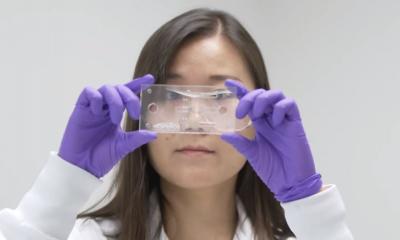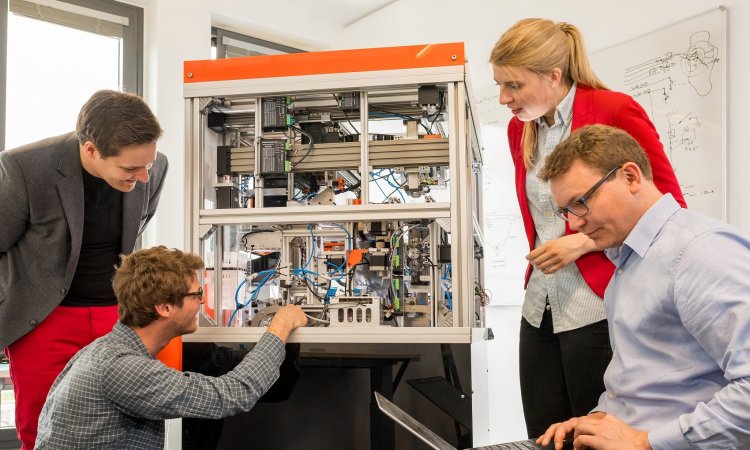Article • Post-analytical interpretive tools
Towards a clearer view of complex lab results
Interpretation of complex profiles of laboratory results can be significantly improved via multivariate pattern recognition software.
Report: Mark Nicholls
A multivariate pattern recognition software, developed by a team led by Dr Piero Rinaldo at Mayo Clinic in Rochester, USA, aims to integrate results to diagnose a particular condition in a single score, in an objective evidence-based way that is open to worldwide collaboration and data sharing. Currently co-director of the Biochemical Genetics Laboratory and vice-chair of Information Management in the Department of Laboratory Medicine and Pathology at the Mayo Clinic, Rinaldo outlined the work at the Frontiers in Laboratory Medicine (FiLM) conference held in Birmingham, UK. Explaining how the software produces post-analytical tools available on demand through a web interface, the approach was first applied to newborn screening, and has grown to involve 269 programs in 69 countries.

In his presentation ‘Personalised reference ranges; developing individualised reference ranges’, Rinaldo suggests there are ‘limitations and pitfalls’ of the traditional way to establish reference ranges and cut-off values for laboratory tests. ‘In my view,’ he said, ‘it’s being done in a manner that seriously underestimates the role of covariates like age at collection and sex. For so many markers, we use the same decision limit for a 21-year-old healthy male and for an 80-year-old obese female as well.’
Moving forward, he advocates the CLIR (Collaborative Laboratory Integrated Reports) approach and the importance of individual reference ranges, paving the way for how lab tests should be routinely ordered in the era of personalised medicine. CLIR, he said, replaces conventional reference ranges with continuous covariate-adjusted percentiles; replaces analyte cut-off values with condition-specific disease ranges; enhances the clinical utility of individual markers with all possible permutations of ratios, and replaces diagnostic sequential algorithms with tool-based parallel algorithms. However, he stressed: ‘The important point to recognise here is that creating better reference ranges is just one initial step of the process, not the end point. That’s the post-analytical interpretive tools.’
This work has paved the way to the pursuit of precision new-born screening, which is defined as near-zero FPR preceding any confirmatory use of molecular testing
Piero Rinaldo
The basic tenant of CLIR is worldwide collaboration and data sharing to establish covariate-adjusted reference ranges based on millions of data points and disease ranges. ‘The software evaluates the degree of overlap of any marker (after covariate adjustment) between the two ranges separately for every possible target condition, and use it to compile a cumulative and integrated score. The comparison of this score versus those calculated for known cases offers an objective assessment of the disease likelihood, a vast improvement over the binary choice of normal/abnormal. The other relevant concept is that clinical validation is an evolving process, as new cases are added (daily) to the database the tools improve accordingly, such as via machine learning.’
CLIR was originally developed to support Region 4 Stork (R4S), a USA federally-funded collaborative project that started in 2004 aimed at improving newborn screening by tandem mass spectrometry. In that project, cumulative reference intervals of dozens of amino acids and acylcarnitines were derived from some 30 million newborns tested in 69 countries, disease ranges were compiled from >21,000 true positive cases. Since 2012, R4S and CLIR online tools have been utilised more than half a billion times, with an average of more than 200,000 scores calculated daily worldwide.
In recent work showing the first prospective application of the second generation of the software, the team focused on the implementation of newborn screening for lysosomal disorders, an area where there has been overall poor specificity, psychosocial harm experienced by caregivers, and costly follow-up testing of false-positive cases. The study concluded that: ‘Post-analytical interpretive tools can drastically reduce false-positive outcomes, with preliminary evidence of no greater risk of false-negative events, still to be verified by long-term surveillance.’
While the outcome of the R4S project was a false positive rate (FPR) of 0.024% and a positive predictive value (PPV) of 69% (US average ~20%) while the first application of CLIR to three lysosomal disorders achieved a FPR of 0.001% and a PPV of 87% and has led to the discovery of a novel biomarker. ‘This work has paved the way to the pursuit of precision new-born screening, which is defined as near-zero FPR preceding any confirmatory use of molecular testing,’ Rinaldo added.
The software offers a number of benefits for clinicians. ‘In the context of newborn screening, a substantial reduction of false positive outcomes means better utilisation of health professional time and resources (no need to see patients who don’t need to be seen), and prevention of unnecessary follow up testing.’ Significantly, it reduces unnecessary stress to parents that something ‘may’ be wrong with their baby when the screening can clarify this.
Profile:
Born in Venice, Italy, Dr Piero Rinaldo is a Professor of Laboratory Medicine and the T. Denny Sanford Professor of Paediatrics. He received his medical and research training at the University of Padova in Italy (1977-1987) and Yale University in New Haven, Connecticut (1987-1998). A paediatrician, board-certified in Clinical Biochemical Genetics, he co-directs the Biochemical Genetics Laboratory and vice-chair of Information Management in the Department of Laboratory Medicine and Pathology at the Mayo Clinic in Rochester, Minnesota.
25.04.2019










